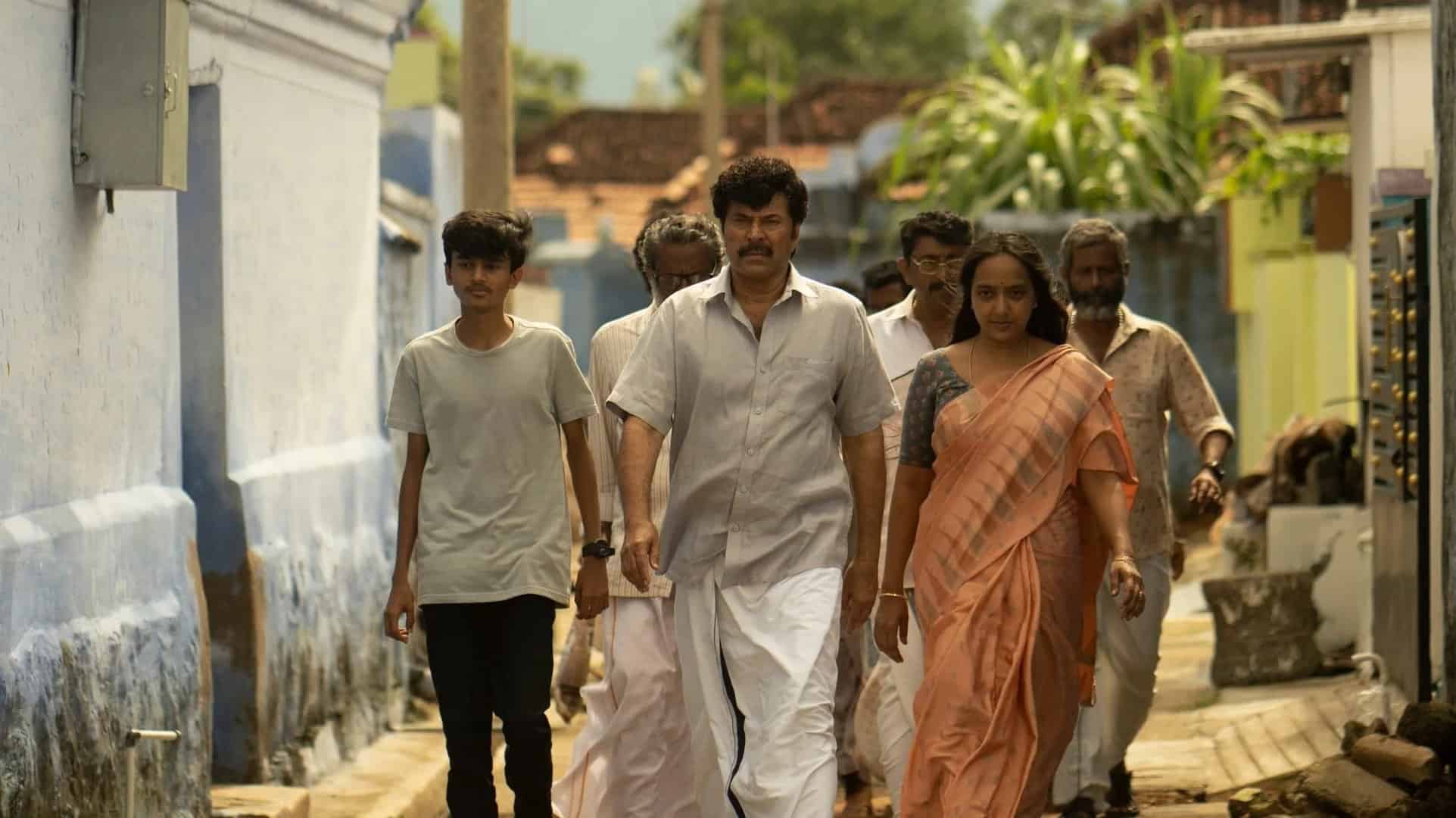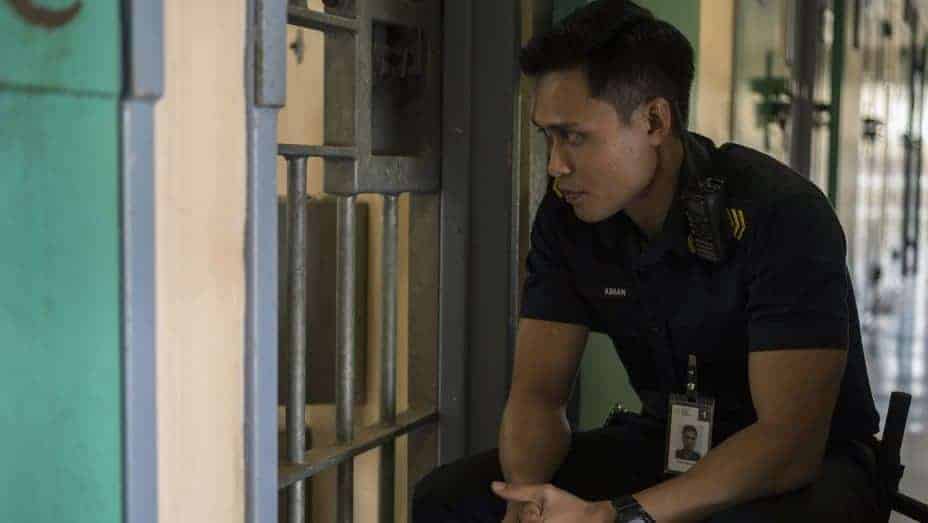Only guys who can't get hard fight with no fear of death. […] He'd seen it, nestling like a newly hatched baby bird – curled into itself, looking hungry and cold. Sometimes in the morning when its owner had just awoken, it seemed longer, full of urine, but it couldn't stand up. It couldn't get hard.
These are the words that introduce the story of Ajo Kawir, the protagonist of the Indonesian bestseller book written by Eka Kurniawan, “Vengeance Is Mine, All Others Pay Cash”. With limp dicks marking the metaphor of flaccidity of toxic masculinity, Kurniawan encapsulated Indonesian machismo culture. He finds poetry in the mugs marred by the worn-out fists, but the bruises are always next to the shivering of a dusty heart. Romantic or not, “Vengeance Is Mine, All Others Pay Cash” enthrals the reader with the intensity of shades: a love story filled as much with kisses as with sweet punches that blend into an idiosyncratic take on the trauma of sexual abuse and patriarchal sins.
Just recently, the book was adapted into a film. Directed by Indonesian indie cult filmmaker Edwin and co-written by Kurniawan himself, the story was endorsed by the Locarno jury, as it swept the main prize in the competition. Edwin's take on the story is impressive; his attempts to find the right language keep the flow of the original's energy in the right tone, delivering something of its own. There's the dialogue with Suharto's regime, but then again, the translucent tissue of the 90s; fighting in the sand, as well as fucking in the sand; blood, sweat and tears, anger and sorrow – a grip of Indonesian identity told in the manner of a stylistic tour-de-force that never fails to achieve the resonance with its audience and contemporary issues.
We managed to talk with Edwin on the occasion of the Locarno Film Festival, during which he talked us through the challenges of adapting Kurniawan's narrative into film language, finding the right expression for the metaphor of impotence, translating the written word to the visual one, lampooning the masculinity, and linking the past with the present.
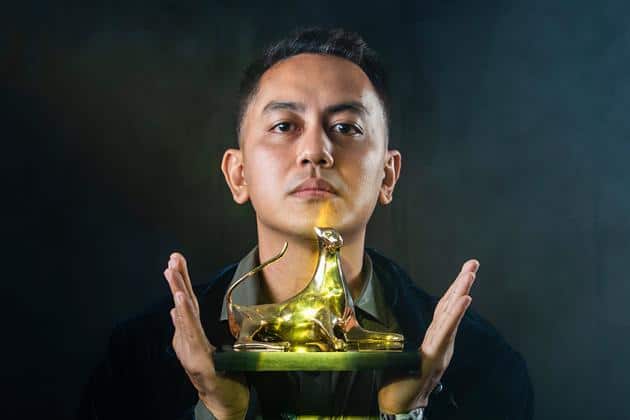
Since you based your film on the book by Eka Kurniawan, who also co-wrote the script, I was wondering what was your initial thought of it after you read it?
At first, I was instantly attracted to the title. The Indonesian one is a bit different, a bit more subtle [“Like Revenge, Longing Must Be Paid in Full”], but both of these phrases have a unique spirit. They're witty and full of energy, but then again, amusingly poetic. When I finished the book, I found it very visual, as you basically experience it, so there is a lot of entertainment in it. But above all, you can also feel a tribute to popular culture. I guess it's not only related to Indonesian culture, but also to the crosscurrents from the States or Hong Kong, especially movies. Although it depicts a certain image of the old days, the end of the 1980s in Indonesia, it's not that kind of piece that revolves around the romanticization of nostalgia. I have a strong feeling the story is so current and relatable to the condition of our country right now, that in fact, through going back to the past, “Vengeance Is Mine, All Others Pay Cash” invites to reflect on the present times of Indonesia. Of course, it's very playful and funny, but that approach only strengthens the contemporaneity of the tale.
Since the narrative in the book heavily relies on non-chronological storytelling and you collaborated with Eka on the adaptation, I was wondering how did the process of translating it into the film language look like?
I can say it was quite an easy process for both of us. We agreed on many things from the beginning. From the start, we knew we can't adapt the book as it is. That having in mind, we tried to grasp the energy and the spirit of the book, but we knew that the film will be different because the medium is different. Eka trusted me in the process of translating it into a more cinematic language. Essentially, we had to strip down the story from its structure, that is, its crazy non-linearity. If we didn't do it, it wouldn't work well in the film. It would probably be a bit too forced and stylized, which is not really the point of the statement I'm interested in. We also agreed that there needs to be a shift in perspective on how we tell the story. As you can remember, in the book, Ajo, the protagonist, talks with his birdie, and his birdie talks back. We decided that we won't show that in the film, focusing more on the tragedy of the love story instead. We also insisted on the lack of repetitions, as in the original there are elements that are supposed to be similar to each other, i.e. the similarity of young Ajo and Gaptooth Mono. With that removed, there are elements that are recreated in order to find its entirely new meaning, especially in the process of redefining the character of Jelita.
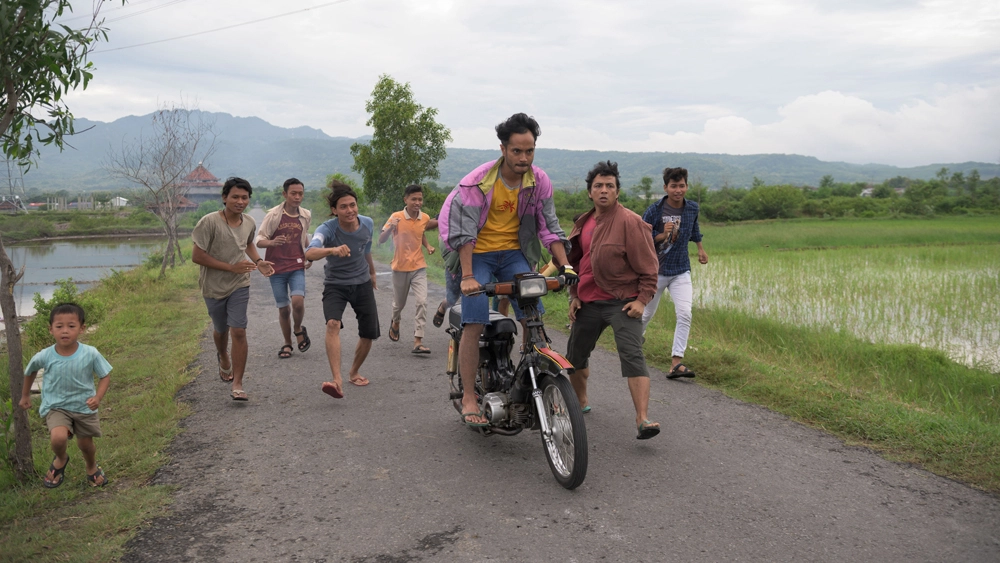
Speaking of Jelita – she's indeed quite different from the original. Who has she become in the film?
That's my favourite character, both in the book and the film. Her background is that she comes, as you might've noticed, from the package of leech oil. It wasn't in the book. I wrote it specifically for film purposes. In one of the scenes taking place in Budi's office, for a brief moment, there is a poster of a girl's face in it. That's Jelita. In my imagination, Jelita is the medicine to all of the problems and everything the characters struggle with. She's embedded in the characters, just like all their traumas are. Ratu Felisha, who played Jelita, asked me the same question: “Who is Jelita? How am I supposed to react to people?” And I tried to convince her to think of Jelita as the representation of the audience and all the feelings that cannot be simply answered for all of us, Indonesians. If we talk about the context of Indonesian history and violation of human rights, at some point there are too many questions we can't get the answers for. At some point, it simply becomes too difficult to trust the source of the history of Indonesia. All these questions need to be re-imagined.
There are not many details about the political situation in the story, although it seems like a lawless land due to the depiction of violence, but there are references to Suharto's dictatorship. You've also mentioned a strong resonance of the book with the current situation of Indonesia. What exactly does the story tell us about the here-and-now of Indonesia?
I'm not entirely sure how many people will connect the dots. But there is hope that the clues will trigger something and the audience will eventually find out about these intentions. For instance, there is a dialogue between the two kids riding the bike, in which they talk about the mysterious sniper [inflicted in the series of Petrus killings]. It's never explained in the film, but the keyword might buzz in the head, leave a trace and lead to something specific since there's a lot behind the story. It's almost an urban legend right now. But for us, Indonesians, it figures as something that represents the most hardcore atrocity of how our government operates. This itself works as a perfect image of how one can simply disappear or be controlled. So I guess I can only hope that these little triggers will inform people and they will want to lean towards more.

Another important theme of both the book and the film is the redefinition of masculinity in the context of Javanese culture. You reflected on it throughout your career multiple times, but this time around it seems incredibly important. I was thinking, is there a connection between the crisis of manhood in the 80s and 90s you depict in the film with the dictatorship?
It's definitely linked. How we were raised as men is strictly connected with how the government treats people, with all the ideas behind the discipline, in which there's no room for boys to cry, no space for any sort of sensitivity whatsoever. It's always about showing power and strength. That's where it is embedded – in the everyday life of people from that period. Machismo itself comes from the very patriarchal Javanese culture and it's perfectly blended with our relationship with colonial history. Currently, we can find patriarchy continuing to spread its roots, but this time in religion. But aside from that, indeed, machismo is strongly rooted in our culture and it appears throughout our country: Java, Sumatra, Sulawesi. The idea of heroism, this man-ish thing revolving around the protection of life, all of that grew up to the point where we started to normalize violence and it became possible so that one could be excused to kill.

In order to question masculinity, Eka used the motive of impotence. Why's that?
I think it's a very effective tool to question how the feminine side of humans, such as sensitivity, can be embraced in this very practical macho world. Impotence can be easily used to show how the individual is repressed in this brutal world called machismo culture.
Both of the protagonists, Ajo and Iteung, suffered from sexual abuse in the past, but the trauma stays with them in the present. How much their example is applicable to the current image of sexual abuse on younger people in Indonesia?
I think sexuality, in general, is not a popular subject to be discussed in everyday life in Indonesia, even now. That proves how powerful is the effect of being suppressed for decades, starting from the era of Suharto. It makes you numb, afraid to come forward and talk about yourself as a human, or in this case, about sexuality. There are lots of cases like Ajo; men who struggle with expressing themselves. He's impotent, but he's unable to talk about it nor he can find the solution for it. The only way for him exists in the realm of violence so that he can show he's enough of a man. I think the story reveals the most recent portrait of Indonesian society. It's still there. A lot of recent cases of domestic violence reported in the big cities, like Jakarta, were reported on the ground of sexual or intermarried abuse. The number is very high and victims can't really process it to the law because there is no law that can protect them. Once married, the law protects the abuser. We are still struggling with facing the law to protect children from sexual abuse from the arranged marriages. It's actually a matter of question: why is it so difficult to establish a law that would protect from the crazy things that happen to women and children? I believe it's still because we cannot escape from the machismo culture.
Do you think the film might struggle with censorship in Indonesia?
Maybe. I don't know yet. Since it doesn't display too much violence, hopefully, we will be able to show it without the need to improvise on the theatre cut. Of course, I'd like to show it the way it is, but you never know.
You set some of the fighting scenes at the sand mines. It is never mentioned in the book, but your setting is very peculiar. Why have you decided to set the scenes particularly there?
Indeed, in the book, the focus is put more on the action rather than the locations. What Eka wrote absolutely beautifully are the fighting scenes. There is even one 20 pages long sequence of fighting. That I can't do in the film. It's too expensive. (laughs) So I needed to make it fast, but it also had to mark a strong impression on feelings. I knew from the start that I will have to achieve it through a careful selection of locations. We thought with the producers that we won't need to have very long days of shooting the actions scenes. Instead, we needed a good spot. One that would send this, you know, harsh, hot, dirty and dusty vibe. This place is also very important for the first meeting of Ajo and Iteung. I wanted to make sure that when people watch the scene, they will think of it as a romantic encounter rather than an action scene. But since the location is very peculiar, it also questions our expectations for the idea of romance. The contrast between the environment needs to be this specific so that it can challenge the idea of romantic meetings.
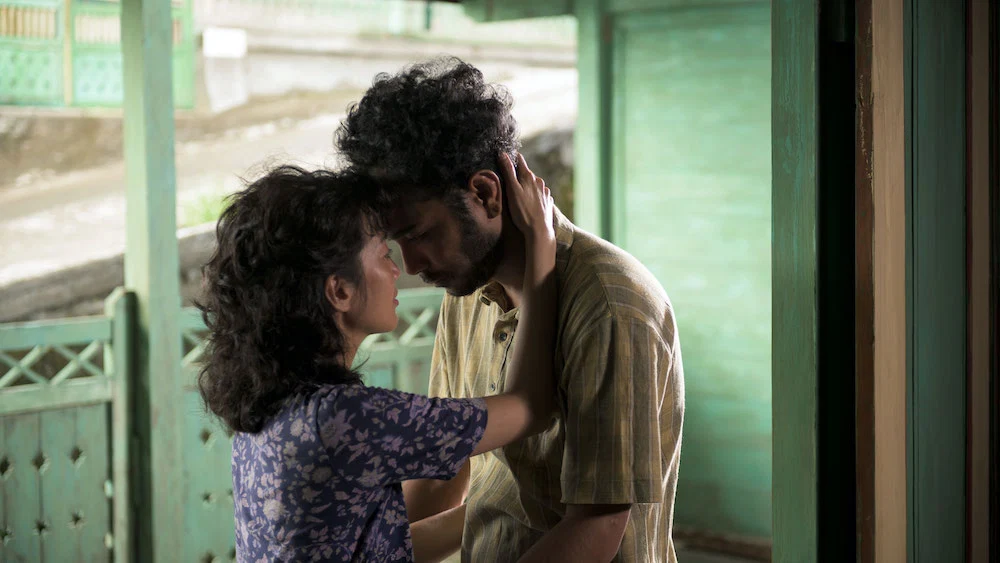
Since the film depicts a very visual decade, the 1990s, especially when it comes to the costumes or approach to colour, I was wondering what was your approach for grasping the vibe of that era?
Absolutely! The 1990s are still strongly remembered as the peak of experimenting with colours, fashion or hairstyle. In general, it's a period that offers a lot of fun in terms of finding the right creative concept for the film. Most of the people who worked on “Vengeance Is Mine, All Others Pay Cash” grew up in the 1990s, so we could reflect on our memories of different details, such as colours or cars. Apparently, there is a lot of similarity in our perception of the image of that time. But the real deal for us was the courage to be authentic. We didn't want to copy the vibe of the old movies or play with the cinephile references. Rather than that, we decided to trust our memories. I guess it was important for us to realize that the film can send us back in time to the old days, to the 80s or 90s, but also that it can link the past with what exists in the current situation. Since the visual side of the film has its roots in our experience or memories, it starts to exist in the dialogue between the past and our understanding of contemporary issues. We couldn't achieve that if we just copied some films. It wouldn't be possible.






